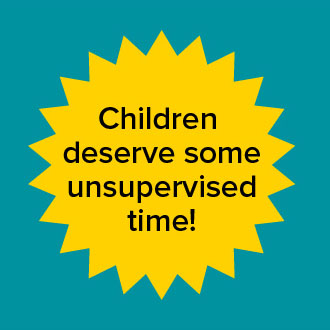And you probably guessed what that thing is: INDEPENDENCE! Kids need more of it! It’s an anxiety buster!
Regine Galanti, PhD is a clinical psychologist and founder of Long Island Behavioral Psychology, a private practice in Nassau County. She’s also the author of many books on anxiety, most recently, Parenting Anxious Kids: Understanding Child Anxiety by Age and Stage (available for pre-order!). She lives on Long Island with her husband and three daughters, who mostly put up with being pushed to do hard things. Instagram: @regine.galanti , TikTok: @dr.galanti
Why Kids Need a Gentle Push Outside Their Comfort Zone, by Regine Galanti
I’m an anxiety therapist, and if I were to sum up my practice in one sentence, it would be “do uncomfortable things to face your fears.”
I’ve often noticed that the anxious kids who come into my office are more than just anxious: they’re also lagging behind their peers. As kids move from being totally dependent on parents (as babies) to being self-sufficient adults, they go through a long in-between phase that starts in toddlerhood and ends with complete independence.
One of the more pernicious impacts of anxiety in kids is that it prevents this independence. It’s something anxious kids often want, but don’t know how to get. Separation anxiety might tell a six-year-old to throw a tantrum and get his mom to stay at a birthday party. But as a result, the child doesn’t learn how to manage being without his mom for a bit. So my focus in therapy is often helping parents to allow for – and push their children toward – independence, in the areas of a child’s anxiety and also outside it.
Even Anxious Kids Long for the Fruits of Independence
The age-appropriate independence tasks I promote are often in line with what children want for themselves, but just aren’t sure how to “perform” them. As kids with anxiety grow, the gap between what their peers are doing and what they’re doing can grow. A teen, for example, might want to learn to drive, but her anxiety around social tasks makes it difficult to find out the drivers ed process, which prevents this independence task from happening.
I take a page from Let Grow and Dr. Camilo Ortiz. Ortiz describes his independence-based treatment for anxiety as, “You’re anxious? Okay, go order a sandwich from the store.” Teaching parents to allow their children to engage in some independent activities they want to do can help the kids catch up to the abilities of their peers.
When Kids Do Something On Their Own it Unlocks Bravery.
To be clear, this is not a new idea in therapy. We know that helping a child take steps to discover their environment is in line with Exposure Therapy: a treatment for anxiety that relies on children doing things that make them anxious and seeing what happens. When we focus on building independence tasks, we build a child’s flexibility in trying new things, and their ability to lean into less preferred emotions. Generally, though, there are some independence based tasks that a child is more willing to try, so it allows for a stronger partnership and motivation to do hard things.
It seems to me that when kids do independent activities, it builds a mastery mindset outside their anxiety zone. Then, when a child needs to do something that’s making them anxious, they have a more solid foundation for trying hard things.
A Girl Ready to Babysit, But Afraid to Text Her Friends.
Take Sarah, for example, a teen who is terrified of texting her friends, so she avoids it. Meanwhile, she wants to start babysitting, because she likes little kids and wants to be able to make her own money. But she hasn’t taken the leap yet.
Her parents recognize that babysitting is an independence activity that Sarah is probably willing to be pushed into trying. Sarah and her parents talk through the steps of babysitting, and when a friend asks her to watch their kids for a few hours, Sarah agrees, even though it isn’t something she’s done before.
The night goes mostly successfully, which makes Sarah feel competent and capable. She’s able to recognize that she wasn’t sure exactly how things would go, but that she managed anyway. Now she can use this experience as a framework for doing other things that make her hesitant or anxious.
Sarah is still anxious when she thinks about texting her friends, but she can recognize the parallels between the experiences: She can break down the steps the same way. She can do something uncomfortable. And she can see that just as babysitting went well and broadened her world, there’s a possibility that texting will do the same. Doing one thing outside her comfort zone can help her do others.
From “Do This for Me” to, “I Can Do It Myself!”
I’ve noticed myself encouraging kids and teens in session to flex their independence skills as well as their “brave muscles.” This might include doing things like scheduling their own sessions, or reaching out independently when they have a conflict rather than asking their parents to do it for them. My goal is to shift a child toward a mentality of, “Okay, I do things,” rather than “Let me find another person who can do things for me.”
Parents can easily take this same approach: before you swoop in and do something for your child, ask yourself if you’re willing to let them do it themselves. This can include tasks like crossing the street, running an errand, managing homework, or using the stove. If this makes you anxious as a parent, let me remind you: doing uncomfortable things to face your fears is the best way to manage that anxiety and help your kids succeed. – R.G.



Comments are closed.